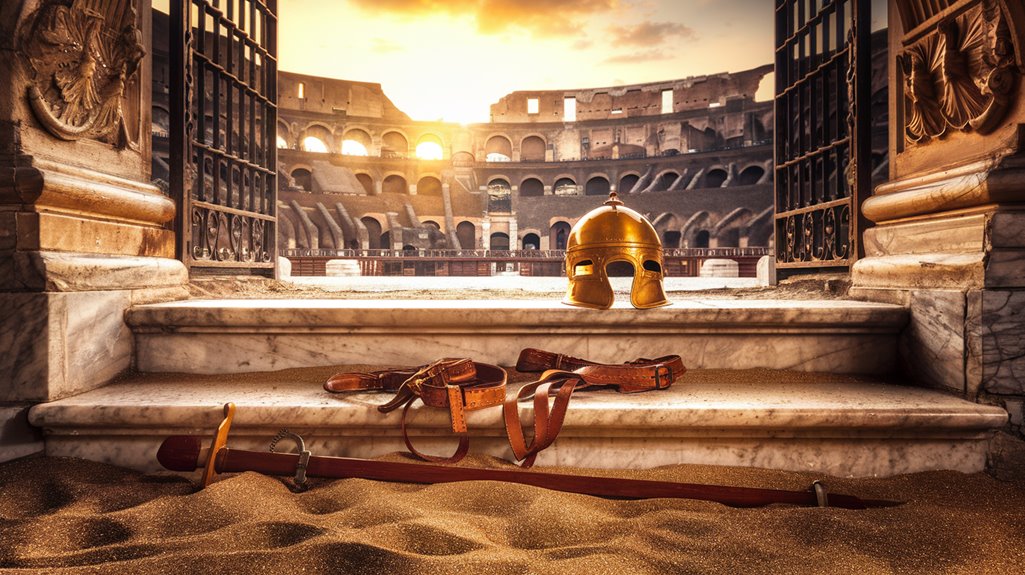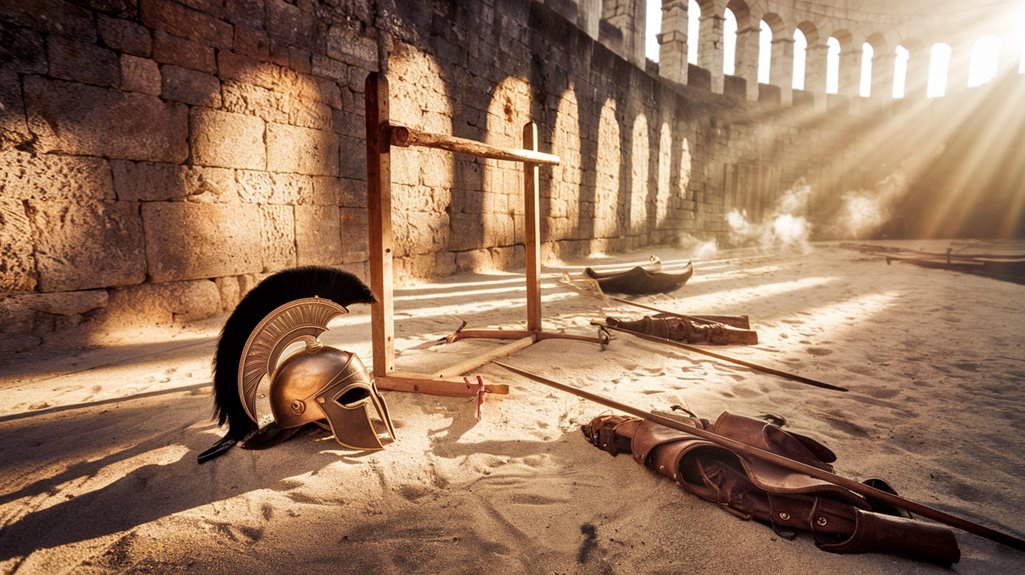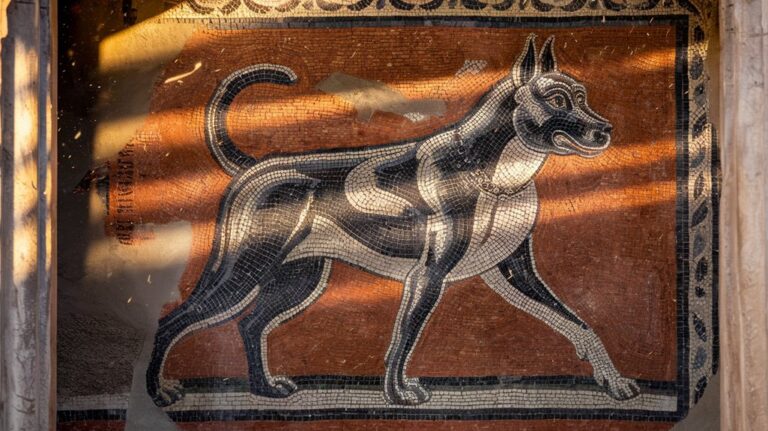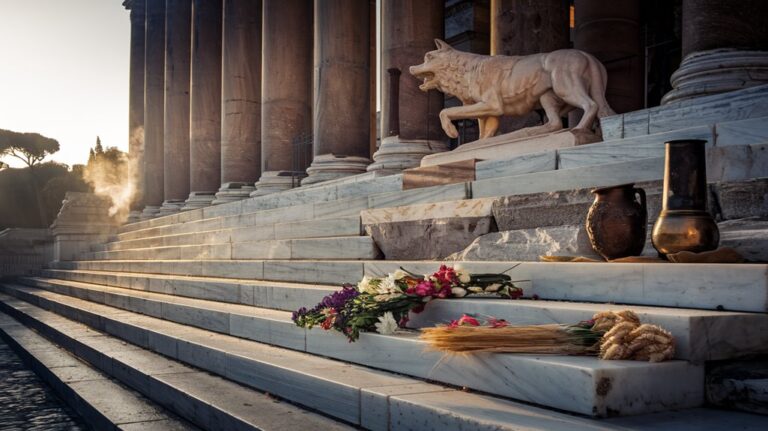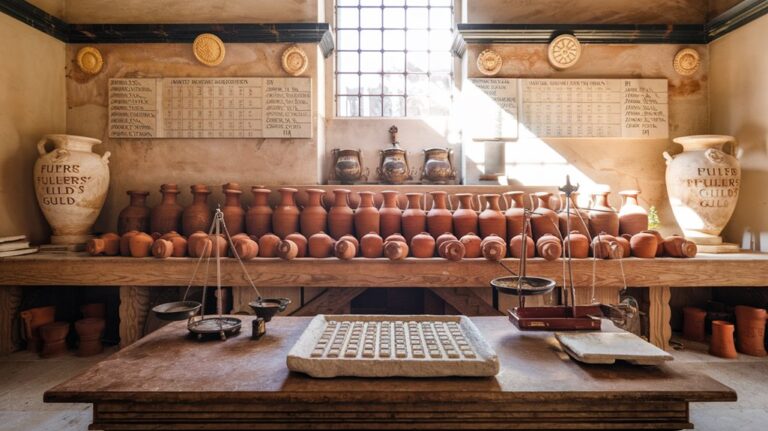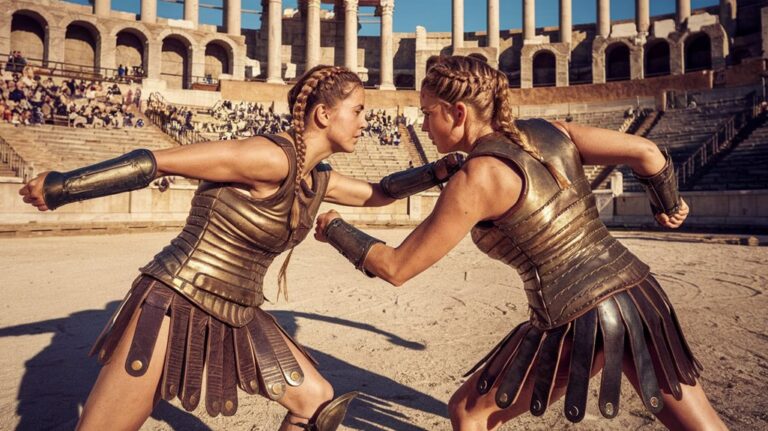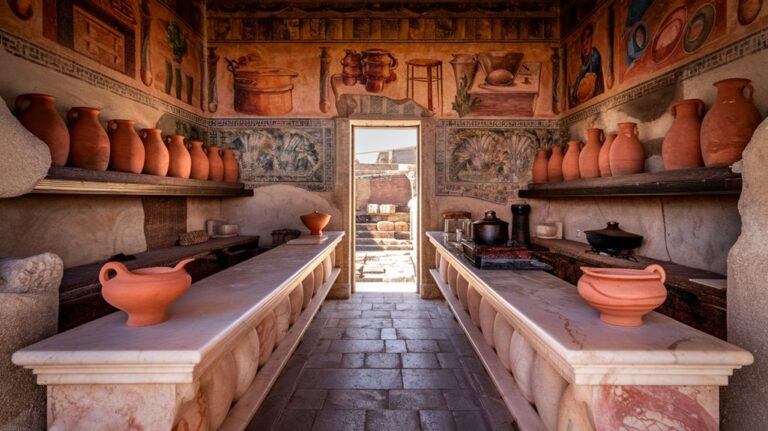Roman Gladiators: The Superstar Athletes of the Arena
You've likely seen movies depicting gladiators as fierce warriors battling to the death in Rome's Colosseum, but there's much more to their story than Hollywood portrays. These ancient fighters weren't just skilled combatants; they were the rock stars of their era, complete with fan clubs, endorsement deals, and larger-than-life personas. Their journey from enslaved fighters to celebrated athletes reveals fascinating insights into Roman society, culture, and the timeless human appetite for spectacle.
Origins: From Funeral Rites to Public Spectacle
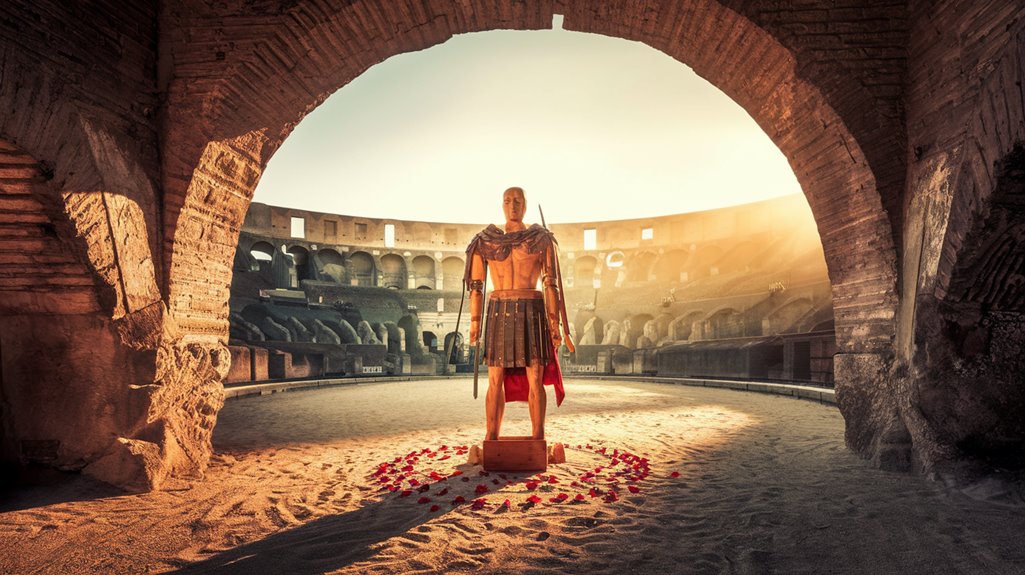
While gladiatorial combat became synonymous with Roman entertainment, its origins were deeply rooted in religious and funerary traditions.
You'll find the first recorded gladiatorial fight in 264 AD, held to honor D. Junius Brutus Pera's death. These funeral traditions began as blood sacrifices to appease pagan gods and guarantee the deceased's passage into the afterlife.
The Romans called these sacrifices "munus," viewing them as a sacred duty to honor their ancestors' memory. The elaborate ceremonies could span up to nine full days and included various ritualistic elements.
What started as private funeral traditions gradually evolved into grand public spectacles. You can trace this transformation through events like Julius Caesar's games, which featured hundreds of matches. Wealthy individuals funded these games to gain popularity among the public.
The cultural significance of these contests expanded as wealthy families used them to gain prestige, eventually leading to the construction of massive venues like the Colosseum.
The Making of a Gladiator: Training and Combat Styles
The transformation of an ordinary person into a gladiator involved intense physical conditioning and specialized combat training. You'd find yourself immersed in the rigorous Tetrad system, a four-day cycle of combat techniques and physical development. Bath complexes and spas played a vital role in muscle recovery between intense training sessions.
Through gladiator conditioning, you'd build strength with weighted weapons, perfect your agility through running drills, and master specific fighting styles. Each warrior learned to maximize their class advantages, with triangular shields being essential for the agile Thracian fighters.
- Train with wooden weapons heavier than actual combat gear to build superior strength
- Learn specialized combat techniques unique to your gladiator class, whether Thracian, Murmillo, or Retiarius
- Develop tactical awareness through strategic sparring and opponent analysis
- Master the balance of speed, power, and precision through integrated training methods
Your training would culminate in becoming a specialized warrior, capable of adapting to various combat situations while maintaining peak physical condition through regular use of recovery facilities.
Life and Death in the Arena
Stepping into the arena meant facing a stark reality where life and death balanced on the edge of a blade.
As a gladiator, you'd face varying mortality rates throughout Roman history, with early matches almost always ending in death. By the 1st century A.D., you'd have better odds – only one in five fights proved fatal, though these rates would rise again in the 3rd century.
You'd follow strict arena rituals, including the option to surrender by dropping your shield and raising your index finger. A referee could intervene if you were near death, and your fate often rested in the host's hands, who'd have to pay if you were killed. The summa rudis enforced rules and could stop fights if necessary.
While death loomed constantly, you'd enjoy privileges like quality meals, hot baths, and decent pay – making the gladiator's life a complex mix of danger and reward. The Flavian Amphitheater hosted these deadly spectacles for nearly four centuries until gladiatorial combat ended.
Fame, Glory, and Social Status
Despite their low social status, you'd find yourself living a life of striking contrasts as a gladiator in ancient Rome. While legally considered among society's lowest ranks, you could still achieve remarkable fame and public admiration. Your victories in the arena might lead to lucrative gladiator endorsements of businesses and politicians, bringing you substantial wealth despite your social constraints. Many gladiators formed supportive labor unions to protect their collective interests. Similar to the intense rivalries seen in chariot racing factions, gladiator combat generated passionate fan followings and fierce team loyalties.
- Archaeological evidence shows fans carved graffiti celebrating their favorite gladiators.
- You'd receive superior medical care and diet compared to average citizens.
- Your training would be professional and highly specialized.
- Despite fame, you'd remain segregated from mainstream society, even after death.
The paradox of your existence would be clear: though celebrated for your skill and bravery, you'd never fully escape the stigma of being a gladiator in Roman society.
The Business Behind the Games
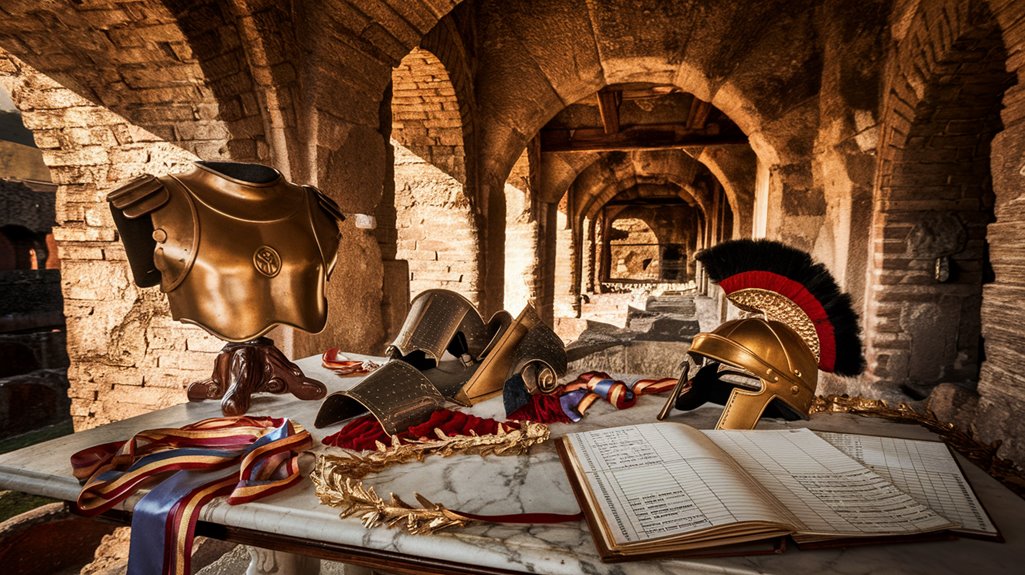
Behind every clash of steel in the arena lay an intricate business empire that would rival modern sports franchises.
You'd be surprised to learn that gladiator economics involved massive investments, carefully calculated profit margins, and a sophisticated trading network spanning the Empire. Gladiators required rigorous medical care similar to today's athletes, adding significantly to operational costs.
Wealthy Romans, known as editors, invested heavily in recruiting, training, and staging spectacular matches. They'd recover their costs through gate receipts, betting revenues, and trading successful fighters. One successful gladiator like Flamma with 21 victories could generate enormous profits for their owner. The more victories a gladiator claimed, the higher their market value soared.
Professional trainers called lanists ran specialized schools where they'd transform raw recruits into skilled warriors.
While the government regulated the industry to prevent any single individual from gaining too much power, the business of gladiatorial combat remained incredibly lucrative until alternative forms of entertainment began gaining popularity.
Legacy of Ancient Rome's Greatest Warriors
While ancient Roman gladiators no longer clash in grand arenas, their influence echoes through history and modern entertainment.
You'll find gladiatorial symbolism embedded throughout today's sports and media, reflecting humanity's enduring fascination with these ancient warriors.
What began as religious funerary rites evolved into spectacular shows of courage, skill, and sacrifice that continue to captivate audiences through various cultural representations. Originally staged by the Etruscans during funerals, these contests marked the beginning of gladiatorial combat in ancient Rome. Their popularity grew so much that gladiatorial games became state-sponsored events by 105 BC.
From movies to video games, gladiators remain powerful symbols of strength and determination.
- Training facilities called ludus gladiatorius set the template for modern athletic academies
- Gladiatorial combat influenced military training techniques that armies still use today
- These warriors' rags-to-riches stories continue inspiring modern entertainment narratives
- Their legacy shaped how we view sporting events as grand spectacles
The gladiators' impact on entertainment, sports culture, and public spectacle remains undeniable in today's world.

